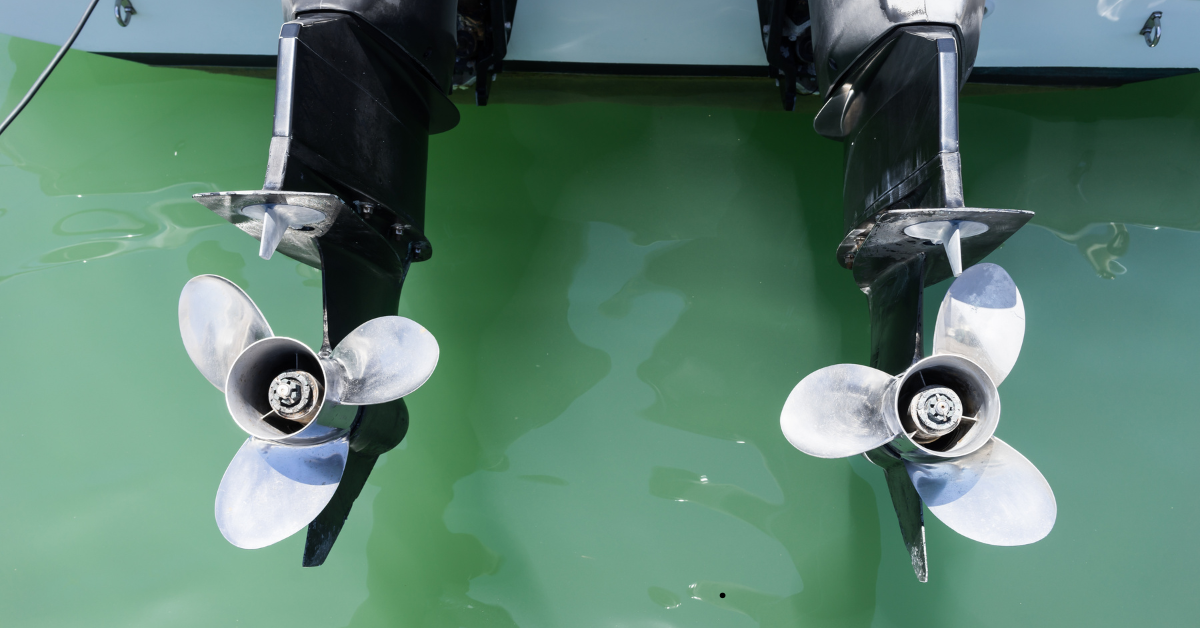The yellow wrench light on your boat might flash a warning, but do you know what crucial equipment can truly prevent propeller strike injuries? It’s not just about being aware of the risks. The most vital piece of safety gear is the ignition safety switch, also known as the kill switch. This device is a game-changer when it comes to boating safety.
The ignition safety switch cuts off the engine if the operator is thrown overboard or moves too far from the helm. Without it, the boat could keep moving in circles, posing a significant danger to everyone in the water. Since 2021, this switch has been required on boats under 26 feet. This law aims to protect operators and others from potential accidents.
Understanding and using the ignition safety switch properly is essential. It’s a simple yet effective way to avoid serious injuries and keep everyone safe while enjoying your time on the water.
How to Prevent Propeller Strikes
Propeller Guards
- Function and Purpose: Propeller guards are crucial safety features designed to prevent injuries caused by propeller strikes. These guards are metal or plastic cages that surround the propeller blades. Their primary function is to create a barrier between the spinning propeller and anyone in the water. This can significantly reduce the risk of serious injuries if someone accidentally comes into contact with the propeller.
- Propeller Covers: When the boat is not in use, propeller covers made of canvas or rubber can be placed over the propellers. These covers prevent accidental contact with the blades and protect them from damage.
- Lower Unit Trim: Adjusting the trim angle of the lower unit brings the propeller closer to the boat when near swimmers. This adjustment helps reduce the risk of injury by keeping the propeller at a safer depth when people are in the water.
- Swim Platform: Many modern boats feature swim platforms at the stern. These platforms help keep swimmers away from the propellers, providing an extra layer of protection.
- Life Buoy: A life buoy is essential for rescuing passengers who have fallen overboard. It is an important piece of safety equipment that should always be in good condition.
- Fire Extinguisher, Knife, Anchor, Bailing Devices: These additional tools are crucial for various emergency situations. A fire extinguisher can handle onboard fires, a knife can cut lines in emergencies, an anchor keeps you in place, and bailing devices remove water from the boat.
Preventive Practices
- Inspection: Before starting your boat’s engine, always inspect the area around the boat and near the propeller. This helps ensure there are no obstacles or people in the vicinity that could be harmed.
- Education: Educate your passengers about the risks of propeller strikes. Make sure they understand the importance of staying clear of the stern and propeller area to prevent accidents.
Speed Management
- Reduction: Slow down when approaching areas where there may be swimmers or other vessels. Reducing speed gives you more time to react to unexpected situations and minimizes the impact of any potential collision.
- Awareness: Maintain constant awareness of your surroundings. Keep a lookout for people in the water and be cautious in crowded or low-visibility areas to avoid accidents.
Emergency Measures
- Kill Switch: The kill switch is a critical safety feature that ensures immediate engine shut-off if the operator falls overboard. This prevents the propeller from continuing to spin, reducing the risk of injury.
- Propeller Guards: Installing propeller guards provides additional protection by covering the propeller blades. This reduces the risk of injury in case of accidental contact with the propeller.
Safety Approach
Effective prevention of propeller strike injuries involves a combination of using the right equipment, maintaining awareness, following safe boating practices, and educating everyone onboard. Implementing these measures creates a safer boating environment and minimizes the risk of accidents.
Ensure everyone on the boat understands safety procedures. By making safety a priority and combining these measures, you significantly reduce the risk of propeller strike accidents and promote a safer boating environment for all.
Conclusion
Preventing propeller strike injuries requires a multi-faceted approach that includes the right equipment, vigilant practices, and thorough education. The ignition safety switch stands out as the most crucial safety feature, effectively stopping the engine if the operator falls overboard. However, combining this with other safety tools like propeller guards, propeller covers, and speed management practices creates a comprehensive safety strategy.
